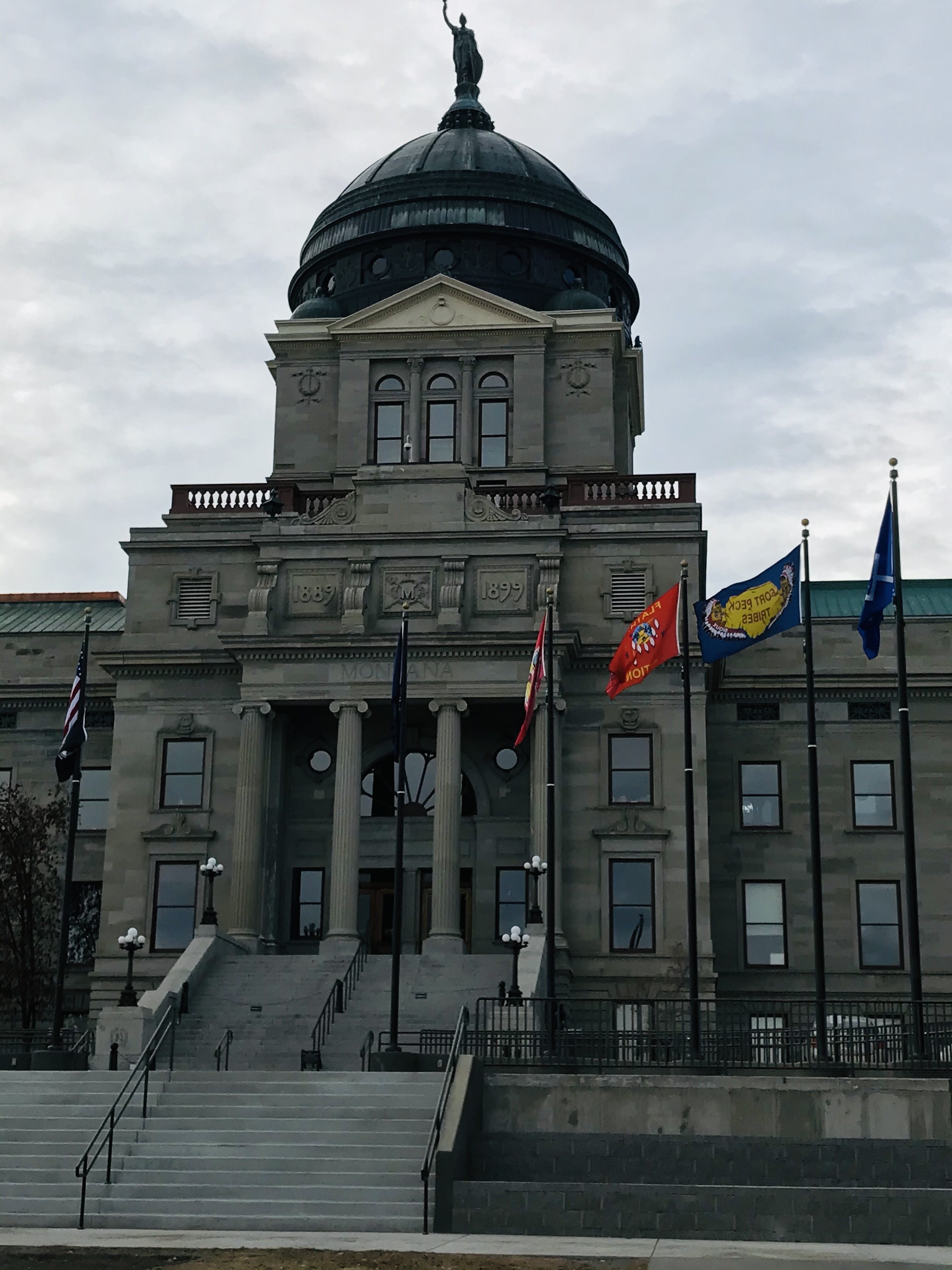
Montana has a five-member independent Districting and Apportionment Commission that will define the districts for all 100 of Montana's legislative representative districts and 50 senate districts using 2020 census data.
Two of the proposed maps give a nearly 15% advantage to one party in addition to their propotional share of voters statewide, in part by eliminating several Native American majority districts. Now is the time to let the Commission know you want a fair map!
The Encyclopedia Britannica defines gerrymandering as “the practice of drawing the boundaries of electoral districts in a way that gives one political party an unfair advantage over its rivals.” While gerrymandering was named for convoluted boundary lines, the shape of districts is not the issue. The question for partisan gerrymandering is whether the share of districts that favor each party is proportional to the share of state voters that favor each party. If one party has a larger proportional share of districts than it is due, that is partisan gerrymandering.
Voter data adopted unanimously by Montana’s Commission indicate that on average, 57% of Montana’s voters vote Republican and 43% vote Democrat. To meet the Commission’s goal of drawing a map that “does not unduly favor one political party,” proposed maps would have 57 house districts that favor Republicans, and 43 house districts that favor Democrats. Two of the proposed maps have exactly this split, maps HDP2 and HDP3, while also meeting all of the mandatory criteria required by law.
The other two proposed maps, HDP1 and HDP 4, create over 70 districts favoring Republicans and less than 30 districts favoring Democrats. These maps meet the mandatory criteria with an emphasis on compactness. While the difference in party voters state-wide is only 14%, these maps would create an advantage of 30% to the majority party. Regardless of the shape of the districts, this is partisan gerrymandering.
To reach more than 70 Republican-favored districts, HDP1 and HDP4 eliminate districts where Native Americans have majorities, reducing Native American voters’ ability to elect the candidates of their choice. Beginning with the districts drawn by 2000 Commission, Native Americans were elected to the Legislature in about the same proportion as their share of the state’s population. These maps reverse the work of past Commissions in assuring fair Native American representation.
Why is gerrymandering so destructive to democracy?
Our elections are based on the principle “one person, one vote.” But one vote doesn’t have equal weight when the deck is stacked with gerrymandered districts. State legislatures should reflect and represent the political make-up and the minority populations of their state. Gerrymandered maps empower the majority political party while ignoring the views of the state’s voters. Under HDP1 and HDP4, the majority party could elect 2/3 of the Legislature or more, when in fact they don’t represent 2/3 of the voters. Such illegitimate political power would have complete control of the law-making process to suppress the minority party and secure ongoing control. This would be the death of representative democracy.
The Commission has called for public comment on its four proposed maps, and is holding a series of in-person public hearings around the state August 25 through September 19 in Pablo, Missoula, Bozeman, Great Falls, Billings and Crow Agency. Three additional hearings are virtual and require pre-registration to testify. The hearing schedule, pre-registration form, and maps can be found on the Commission’s website: https://mtredistricting.gov/
Hearing schedule: https://mtredistricting.gov/regional-public-hearings
You can also submit written comments https://mtredistricting.gov/contact/
Let the Commission know that you favor maps that do not unduly favor a political party and that you want maps that fairly reflect and represent minorities and political make-up of Montana voters.
These districts will stand for the next ten years, defining how you and your community will be represented in the Montana legislature. Where these district boundaries are drawn will affect how responsive Montana's legislators are to their constituents.
The time to make your voice heard is now.
For more information about Montana's redistricting process, check out other resources on the League website:
https://my.lwv.org/montana/redistricting-congressional-districts
https://my.lwv.org/montana/redistricting-legislative-districts
https://my.lwv.org/montana/communities-interest
https://my.lwv.org/montana/competitive-districts
https://my.lwv.org/montana/how-montana-compares-other-states
lwv_on_redistricting_in_montana.pdf